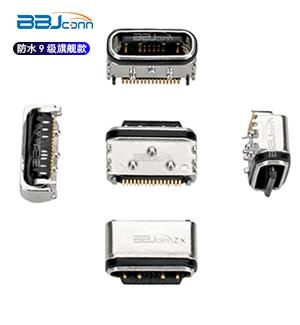More and more mobile phones are now using Type-C (or USB-C) interface data cables. Although all Type-Cs look the same, there are actually many different types.
At the most basic level,Type-CJust referring to this specific USB plug, plus some wire routing specifications. So Type-C just tells you what the wire looks like, it doesn't describe any specific speeds, capabilities or supported data protocols. It's basically designed to be future compliant The trend of more modern plugs. Type-C plugs have more pins, so the plugs are symmetrical, so don't be afraid to plug them backwards.
Besides appearance, we also need to consider some of its parameters, such as power and data transfer rate. Although it does not describe any specific speed or power function, it still has minimum specifications. For example, all Type-C cables should support at least 3 amps of current and 60 watts of power. Also, since the 2 ends of the TYPE-C cable are the same, they must be connected to send data and power the same way.
This is different from previous USB cables. The "host" end (such as your computer) usually has a USB-A connector, while the "device" end has some other connectors. For example Micro-USB, Mini-USB or USB- b.

Let's take a look at the different possible speeds of TYPE-C cables. Some of you may already be familiar with USB3.1 or "SuperSpeed" USB, which supports speeds up to 10Gb. Obviously, TYPE-C is not any of these things. Again, Type-C is just a connector, while USB3.1 is a data transfer standard. Conversely, a Type-C cable can use one or more USB standards. This can be USB2.0, 3.0, 3.1Gen1 or 3.1 Gen2. Depending on the USB speed class it uses, it will have a different maximum speed. This means that even if Type-C is the latest brand new connector, it may be as fast as a normal usb2.0 cable, only 480Mbps. Of course , it may also support USB3.1. So pay attention to the parameters when buying a cable.
Look at the current and power. Some charging cables can reach 5A and 100W, much higher than the standard 3A and 60W. However, not all TYPE-C cables or devices can do this. If the cable, charger and device Both support power supply, and Type-C has some special functions. For example, to charge a device the size of a monitor without connecting the plug to the wall, all data and power are transmitted through the Type-C cable.
Also, power delivery is more than just charging, it also conveys information about the connected device. Because if the cable or device doesn't support power delivery, the power delivery will only send 3A by default, but if you see that power delivery is supported, you need to know more , such as how much power is used. In addition, the transmission of power can use the "dual role" capability of TYPE-C, so a port can be used as power input and output, and can also be used for mode switching. This is why in the latest mac computers, You can charge them by plugging cables into the TYPE-C ports, and all of those ports can also be used to power the device itself.
